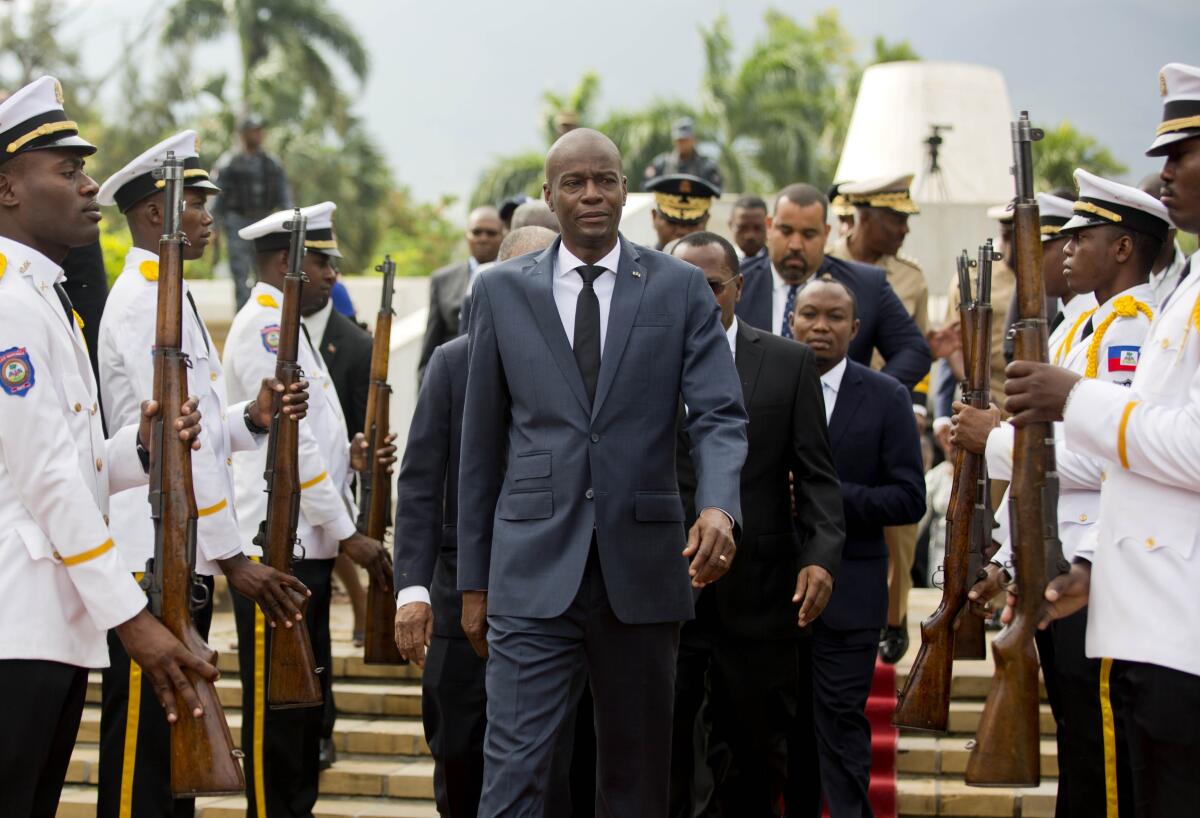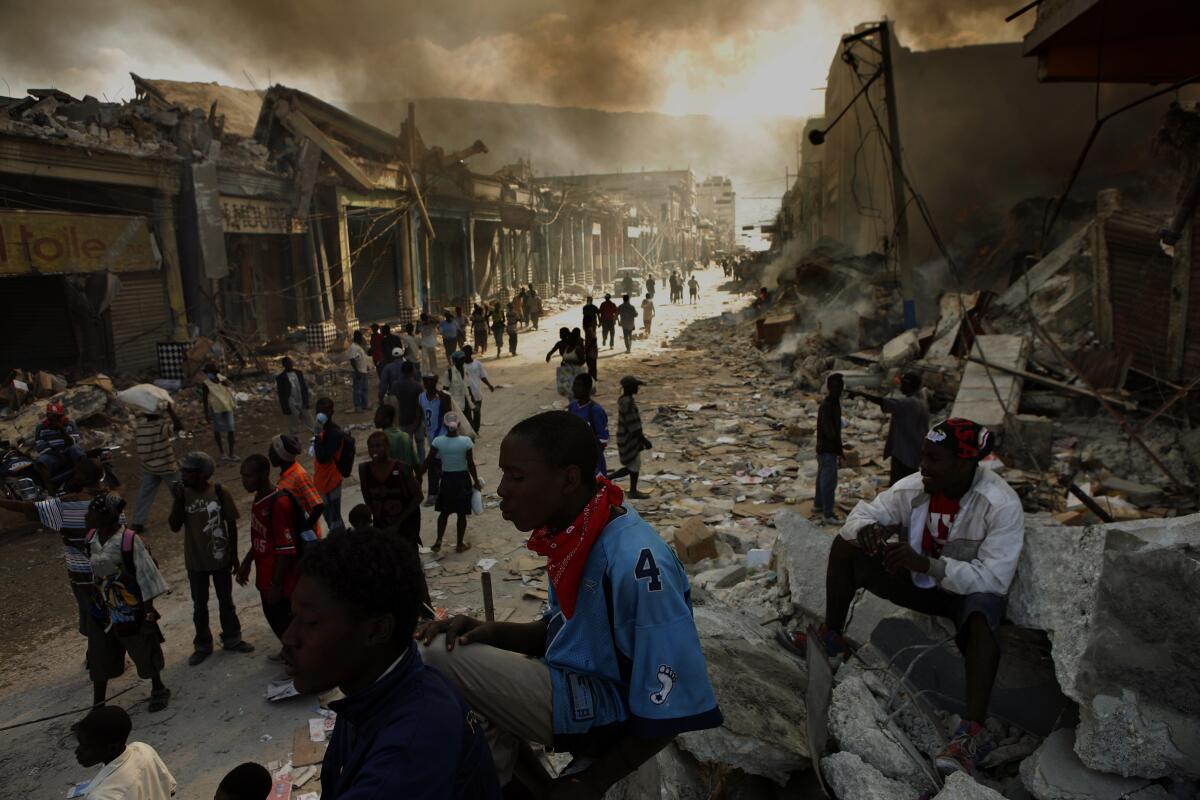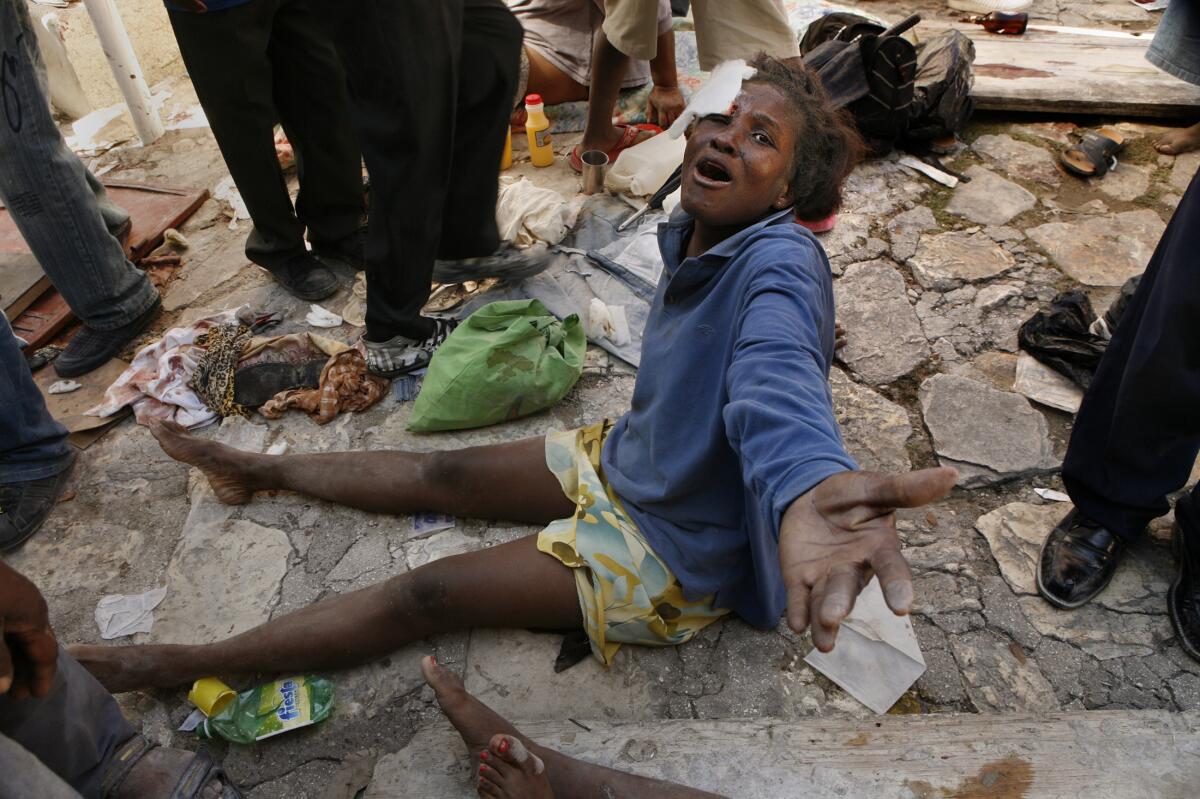Haiti’s years of political struggle coincided with other calamities

- Share via
Haiti has demonstrated extraordinary resilience in the face of seemingly unstinting political turmoil and natural disaster. Now the Caribbean nation, the poorest in the Western Hemisphere, is again in the international spotlight with the assassination early Wednesday of its president, Jovenel Moïse.
Even before a series of modern-day calamities — the brutal father-son Duvalier dictatorships that ended in 1986, periodic destructive hurricanes, the devastating 2010 earthquake and a nearly decade-long outbreak of cholera that followed — Haiti was shadowed by a centuries-old legacy of colonialism, slavery and exploitation.

Less than 700 miles from Florida, the former French colony is deeply entangled with U.S. history. The slave revolt that culminated with Haitian independence from France in 1804 also brought about the Louisiana Purchase, the vast territorial sale by France that changed the face of a still-young United States.
Situated on the western third of the island of Hispaniola, which it shares with the Dominican Republic, Haiti is culturally vibrant despite grinding deprivation.
Its 11 million people reflect a mélange of influences — Afro-Caribbean, European and Latin American. Artists of Haitian birth, including acclaimed writer Edwidge Danticat and rapper-actor Wyclef Jean, have left a significant mark on U.S. culture.
Haiti’s hardships, except when they occur on a grand scale, often go little noticed by the outside world.
Moïse’s assassination was preceded by months of growing violence by criminal gangs, which set off a vicious round of kidnappings, killings and displacement whose effects rippled across a broad sector of Haitian society. A United Nations report last month cited a “widespread sense of insecurity” and “dramatic consequences for the civilian population.”
At times, even well-intentioned international efforts have caused yet more suffering in Haiti. In a recent memoir, former U.N. Secretary-General Ban Ki-moon wrote that the world body should have done more to address a cholera epidemic, traced by several investigations to U.N. peacekeepers.
That outbreak killed thousands of Haitians after the 2010 earthquake, and was not brought under control for nine years — shortly before the pandemic began. Haiti has essentially no COVID-19 vaccination program in place.
Here is more background on past crises the country has weathered.
The Duvaliers
Francois Duvalier and his son Jean-Claude — known respectively as “Papa Doc” and “Baby Doc” — ruled Haiti between 1957 and 1986, their successive reigns characterized by numerous harsh abuses. The elder Duvalier, a rural doctor who pledged to economically empower the country’s downtrodden Black masses, instead fell into autocratic ways and declared himself president for life, buttressed by a terrifying paramilitary group known as the Tontons Macoutes.
His son Jean-Claude Duvalier, at 19 the designated successor, took over following his father’s death in 1971. At first the younger Duvalier sought to cultivate an international softer image, but the Tontons Macoutes used brutal means to try to suppress nationwide protests over joblessness, poverty and political repression. In 1986, facing overthrow, “Baby Doc” fled to France. He returned in 2011 to Haiti, where he failed to regain power and was embroiled by embezzlement charges, but was allowed to remain free.
Jean-Claude Duvalier died three years later, and in the post-Duvalier era, Haiti has struggled to attain stable governance. A charismatic priest, Jean-Bertrand Aristide, became the country’s first democratically elected president, in 1990, but lasted less than a year before being deposed by a coup.
That pattern persisted; at the time of his killing, Moïse was governing by decree. Opponents and many legal experts said his term should have ended in February.
The 2010 earthquake
The catastrophic magnitude-7.0 temblor ravaged the capital, Port-au-Prince, and heavily damaged several other cities. Haiti was no stranger to ruinous storms and smaller quakes, but this was its worst natural disaster. Although figures remain disputed, deaths were put at about 200,000, with an additional 300,000 people hurt. At least 1.5 million Haitians were internally displaced.

Despite a massive infusion of international aid, recovery proved elusive. In 2016, with reconstruction still foundering, the country was hit by Hurricane Matthew, the strongest storm to hit since the 1960s. More than 500 people were killed, and massive destruction helped reignite the cholera epidemic.
What has been the U.S. response to the killing of Haiti’s president?
President Biden pronounced the assassination “heinous” and said the United States stood ready to help. In May, the Biden administration offered eligible Haitian nationals living in the United States the chance to apply for an 18-month designation known as temporary protected status. That protection, first extended after the 2010 earthquake, could affect more than 100,000 Haitians living in the U.S.
Some in Congress have also been trying to draw attention to Haiti’s woes, both recent and historic. In May, lawmakers including Rep. Val Demings (D-Fla.) formed the House Haiti Caucus, pledging to “work for a Haiti free from corruption, violence, repeated violations of civil and human rights, and economic and public health crises.”
More to Read
Sign up for Essential California
The most important California stories and recommendations in your inbox every morning.
You may occasionally receive promotional content from the Los Angeles Times.










